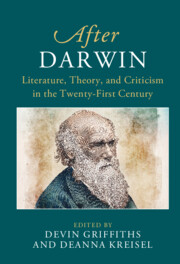Book contents
- After Darwin
- After Series
- After Darwin
- Copyright page
- Contents
- Figures
- Contributors
- Chapter 1 Introduction
- Part I Environments after Darwin
- Part II Differences after Darwin
- Part III Humanism after Darwin
- Chapter 11 Darwin’s Human History
- Chapter 12 Conscience after Darwin
- Chapter 13 Darwin, the Sublime and the Chronology of Looking
- Chapter 14 Instinctive Moral Actions
- Chapter 15 Darwinian Analogies in Thinking about Art and Culture
- Afterword
- References
- Index
Chapter 15 - Darwinian Analogies in Thinking about Art and Culture
from Part III - Humanism after Darwin
Published online by Cambridge University Press: 01 December 2022
- After Darwin
- After Series
- After Darwin
- Copyright page
- Contents
- Figures
- Contributors
- Chapter 1 Introduction
- Part I Environments after Darwin
- Part II Differences after Darwin
- Part III Humanism after Darwin
- Chapter 11 Darwin’s Human History
- Chapter 12 Conscience after Darwin
- Chapter 13 Darwin, the Sublime and the Chronology of Looking
- Chapter 14 Instinctive Moral Actions
- Chapter 15 Darwinian Analogies in Thinking about Art and Culture
- Afterword
- References
- Index
Summary
The ability of conscious human subjects to modify their behavior and adapt their institutions to changing circumstances has never been in question. Lamarck and Darwin innovated by making natural species the outcomes of adaptation to environmental pressures: thus, not only human institutions, but natural kinds, fell under the heading of choice and change. This plasticity raised the question of heritability, or the persistence of somatic learning across generations. Attempts to formulate a physical basis for inheritance through the second half of the nineteenth century relied on analogies drawn from technology and culture and, in return, suggested new ways of describing and explaining cultural facts. Neo-Lamarckianism in France spurred the creation of analogies involving biology, chemistry, psychology, and aesthetics, as a protest against the reduction of inheritance to features of the gene.
- Type
- Chapter
- Information
- After DarwinLiterature, Theory, and Criticism in the Twenty-First Century, pp. 199 - 210Publisher: Cambridge University PressPrint publication year: 2022

